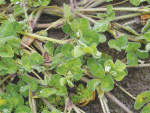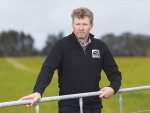A one-size-fits-all vaccination programme does not suit different sheep systems, which all have different vaccine requirements.
At a recent Beef + Lamb NZ Farming for Profit workshop in Canterbury, StockCare vet Chris Mulvaney outlined factors farmers should consider when putting together a vaccination programme with their animal health providers.
A standard five-in-one pre-lamb vaccination will cover lambs for blood poisoning at birth and tetanus at tailing.
However, protection against pulpy kidney (a clostridial bacteria) tends to run out between tailing and weaning. Best practice is to give lambs a 5-in-1 sensitiser at weaning and a booster four weeks later. Ewes will need an annual booster two to three weeks before lambing.
Mulvaney says the pulpy kidney risk is associated with the ingestion of very high-quality feed (lucerne, clover, herbs) when the pulpy kidney bacteria can rapidly multiply in the intestines. Ewes and lambs on typical ryegrass type pastures are at a much lower risk so the lack of adequate protection is not an issue.
There are four strains of pulpy kidney bacteria (A, B, C & D) and another clostridial bacteria (sordellii) has been implicated as a cause of sudden death as well. Five-in-1 vaccines only protect against strain D. It is very difficult to diagnose which bacteria or strain is the cause of sudden deaths.
If farmers are seeing sudden deaths in lambs and/or ewes despite 5-in-1 vaccination they may need to review their current programme.
Mulvaney says unexpected sudden deaths in sheep grazing high-quality forages may be due to red gut, bloat or clostridial disease. Red gut and bloat are relatively easy to diagnose. If deaths are not caused by one of these, they are most likely due to clostridia.
A recent study in Wairarapa showed 13% of lambs were not getting enough colostrum. If they are not getting enough colostrum they are not getting enough antibodies to protect them.
Lambs need to have colostrum within the first 12 hours so giving two-day old lambs colostrum is a waste of time.
Mulvaney says farmers need to ensure every ewe is vaccinated correctly.
In terms of preventing sudden death in ewes and lamb, which have been vaccinated with the standard 5-in-1, if there is some suspicion that the deaths might be related to clostridial disease, he suggests vaccination options based on knowing what type of sheep are dying and when they are dying.
Lambs dying between tailing and weaning
Vaccinate the ewes two to three weeks pre-lamb and this should provide the lambs with some protection.
Five-in-1 sensitiser in lambs at tailing and a booster four weeks later. Make sure all the lambs are older than about four weeks. This programme will only increase protection against strain D.
Sensitise lambs at tailing and give a booster four weeks later. This will protect against the other pulpy kidney strains and sordellii.
Lambs dying after weaning despite 5-in-1 vaccination
All clostridial vaccines protect against pulpy kidney for up to 12 weeks so another booster 5-in-1 booster may help, but again this will only protect against strain D.
Vaccinate lambs at weaning and four weeks later with a clostridial vaccine.
Ewes dying between set stocking and weaning
Change to a Coglavax 8 or Covexin 10 programme. This means the ewes have to get a sensitiser and then the pre-lamb booster in the first year.
Then the ewe lambs need a sensitiser and booster at weaning and the ewes a pre-lamb booster every year.











